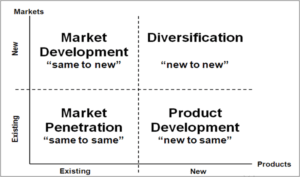What is market penetration?
Well, for starters, market penetration refers to selling a product or service in a certain market and is measured by the amount of the sales volume of an existing good or service equated against the total target market for the product or service.
When there is a new market entrant, it is essential for that company to use effective market penetration strategy to efficiently use its product, enter the market smoothly, thereby capturing a significant market share in the process. Market penetration is also frequently used to determine whether that product or service is capable of gaining a fixed percentage of the market.
What are market penetration strategies?
1. Price adjustment:
Price adjustment is one of the most frequently used marketing strategies. For example, lowering prices is an effective way of increasing sales and gaining more customers in the process. Once the market and competitors are thoroughly analyzed, the company can either lower prices as mentioned above to attract more potential customers or increase prices, thus marketing the product as a premium brand that exceeds the quality of competitors. However, both tactics if overdone can arouse suspicion; lowering the prices too much could indicate a lousy product quality and at the same time increasing prices too much could also completely repel customers who would then have doubts about the product.
2. Improving Products:
Informing customers that your product have been innovated (which could be an extension strategy as well when the product has reached its maturity stage) into a better and improved product is an effective way of engaging with them. Customers always strive for betterment in the products they purchase and sought for the best experience, and this trick serves the purpose. Of course, the product should also quantify into a better one through better product design and quality as well to do justice to the end consumer. Updating your product and its packaging periodically would benefit the business. An example is of advanced eye protection in the form of sunglasses; during yesteryear, sunglasses were merely were brown shades helping people see better in bright environments. However, with the advent of polarization which improved contrast in high-glare environments and later the ultraviolet UVA and UVB brought a whole new meaning to sunglasses.
3. Increasing Promotion:
Utilizing the right promotional mix and increasing promotion can effectively increase market penetration, for instance, advertising for creating awareness or reminding, the advertising function would at the same time depend upon how mature the product is. Setting aside a budget and developing periodic advertising campaigns over the span of a year would help customers remember your brand.
4. Strengthening Distribution Channels:
Strengthening distribution channels helps increase market share. If the company manufactures products and sells these through distributors across a specific geographic area, it can utilize forward integration and launch its own retail stores across the country and create more touch points for customers. This would help the company gain more customer insight and enjoy an increase in profitability.
5. Increase Product Use:
Marketing strategy when used effectively to increase product awareness will result in an increased product consumption and eventually result in an increase in market penetration. A marketing penetration strategy example is of Coke Zero, Diet Coke had been a success for Coca-Cola but most of its consumers were females because people assumed it to be a girly drink. When the company launched Coke Zero (which actually offered the same benefits), that created more customers.
The Ansoff’s Matrix:
A marketing strategy tool, called the Ansoff’s Matrix is often used to ascertain how marketing penetration works or should work. It is a strategic planning tool that provides an outline to help marketers develop strategies for future growth of the company. It has been named after the Russian American business manager, Igor Ansoff, who devised this concept.
Looking at it clockwise, the first quadrant shows ‘new market’ and ‘existing product’ which is described as market development whereby the company expands into a new market with products it has already been selling.
The second quadrant highlights diversification through introducing a ‘new product’ in a ‘new market’. It could either be conglomerate diversification or concentric diversification. The former relates to manufacturing products which are unrelated to the company’s existing product portfolio, whereas, the latter, refers to products related to the existing business portfolio.
Similarly, the third quadrant, highlights a new product development in an existing market where the company feels it should introduce something new and innovative in the market such as the iPod or touch screen phones.
The fourth quadrant shows ‘existing products’ in the ‘existing market’ which means the company uses either of the five penetration strategies highlighted above to gain more market share in the existing market.





